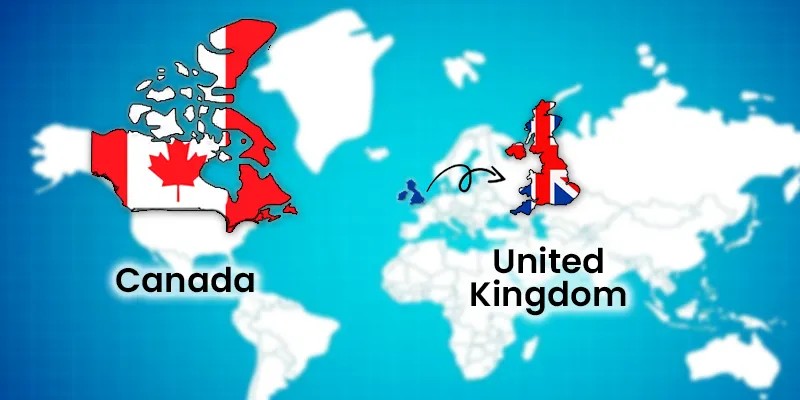Canada’s vast landscapes often evoke images of sprawling wilderness, but just how large is it compared to other countries, specifically the UK? This article delves into a detailed size comparison between Canada and the UK, examining their land areas and geographical differences.
Canada’s sheer size dwarfs the UK. Canada is a staggering 40.99 times larger than the UK. This significant difference in landmass translates to diverse landscapes, climates, and population distributions. While the UK encompasses 243,610 sq km, Canada boasts a massive 9,984,670 sq km, making it the second-largest country globally by total area.
A Deeper Look at the Size Disparity
Canada’s immense size is partly due to its north-south orientation, stretching from the frigid Arctic Ocean down to the border with the United States. This vast expanse encompasses a wide array of geographical features, from towering mountains and expansive prairies to dense forests and arctic tundra.
Conversely, the UK, an island nation situated off the coast of Western Europe, is considerably smaller. Its geography is more compact, characterized by rolling hills, rugged coastlines, and picturesque countryside. The difference in latitude also contributes to the contrasting climates; Canada experiences long, harsh winters in many regions, while the UK has a more temperate climate with milder winters and cooler summers.
Provincial and Country Breakdown
Canada comprises ten provinces and three territories:
- Alberta
- British Columbia
- Manitoba
- New Brunswick
- Newfoundland and Labrador
- Nova Scotia
- Ontario
- Prince Edward Island
- Quebec
- Saskatchewan
- Northwest Territories
- Yukon
- Nunavut
The UK consists of four countries:
- England
- Scotland
- Wales
- Northern Ireland
This further highlights the administrative and geographical complexities associated with Canada’s larger size. Managing such a vast and diverse territory presents unique challenges and opportunities for Canada compared to the more centralized governance of the UK.
Population Density: A Contrasting Picture
While Canada boasts a significantly larger land area, its population is considerably smaller than the UK’s. As of July 1st, 2023, Canada’s population stood at 40.10 million, according to Statistics Canada. The UK, with a population of 67.74 million as of June 30th, 2023, according to the Office for National Statistics (ONS), is much more densely populated. This disparity in population density further underscores the vastness of Canada’s uninhabited spaces and the concentration of the UK’s population within a smaller area.
Conclusion: Size Matters
The sheer scale of Canada compared to the UK significantly impacts various aspects of life, from population distribution and economic activities to environmental concerns and infrastructure development. Understanding this fundamental difference in size provides valuable context for comparing and contrasting these two nations. While the UK’s compact nature fosters a sense of interconnectedness and proximity, Canada’s expansiveness offers boundless opportunities for exploration and resource development, showcasing the unique characteristics of each country.


